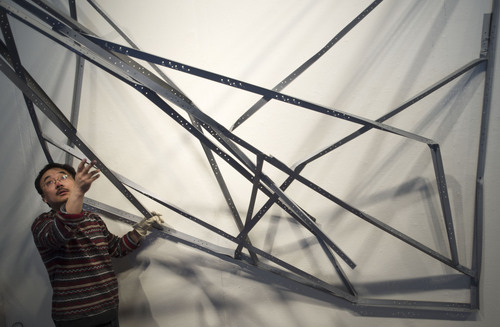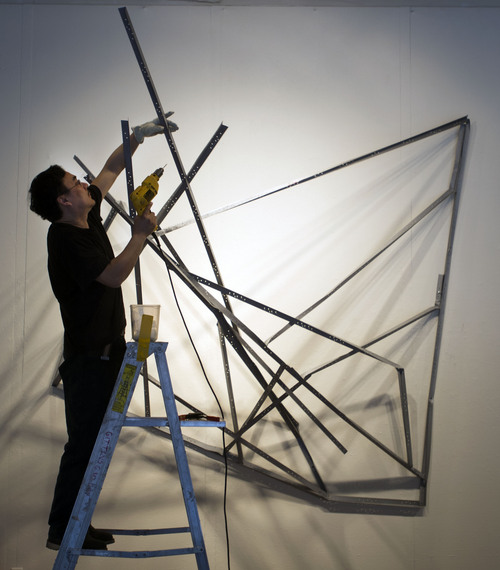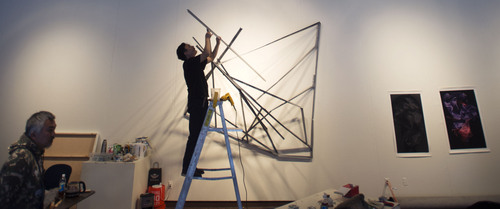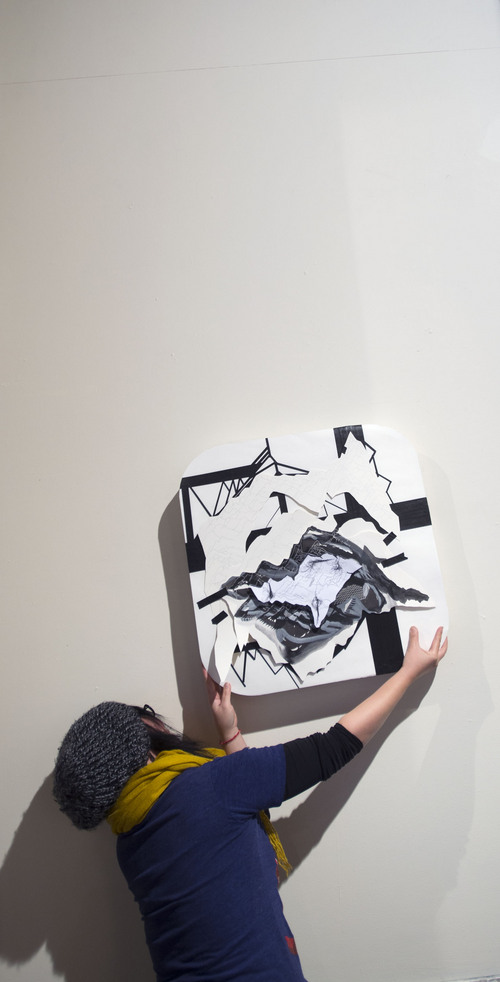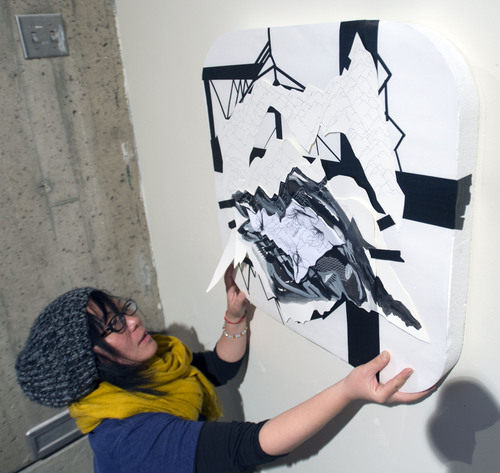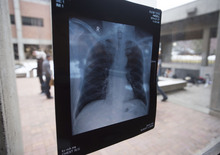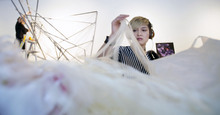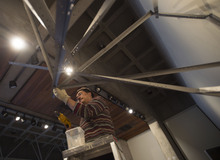This is an archived article that was published on sltrib.com in 2014, and information in the article may be outdated. It is provided only for personal research purposes and may not be reprinted.
Huang Xu finds inspiration in the detritus of modern life and nature, like litter, plants and even his own spit. The Beijing artist is known for using a digital scanner to turn crumpled plastic bags and phlegm gobs into complex photographs.
Beijing residents dot their city's sidewalks with spit not out of rudeness, but because the perpetually foul air makes it necessary to clear one's ever irritated throat. Constantly.
"On one side it's beautiful, and on the other it is scary, like a horror film from Hollywood," he said last week, while taking a break from "a living gallery" he is setting up to explore air pollution and its effects.
Huang is among a group of four artists from China and Taiwan visiting Salt Lake City this month as part of an exhibit called Beijing-SLC Connect — billed as "a visual enticement to action" — at the University of Utah's Gittins Gallery. The other artists are Huang's wife Dai Dandan, and Li Gang, also of Beijing, and Mei Mei Chang, who is from Taipei and now lives in Washington, D.C.
"The show starts a visual conversation about air pollution so we can engage new people and give them an outlet to express themselves and image it in a different way," said Betsy Brunner, a communications doctoral student who is organizing the exhibit with professor Kevin DeLuca.
Brunner secured $20,000 in grants from the student fee-supported Sustainable Campus Initiative Fund and other U. programs to bring the exhibit together, which features a round table Monday. Works by New York photographer Matthew Niederhauser are also on display.
"You have this long tradition of art and activism in America. The challenges the environmental movement faces now is how do you visualize these problems we now confront," said DeLuca, whose scholarship explores the early history of U.S. environmentalism.
"Air pollution is not quite as easy to visualize that moves people the way a picture of Yosemite moves people."
The U. exhibit will remain a work in progress during its entire run through Feb. 20, with the artists producing art most of the time and working with students and anyone else who wants to drop by.
China's capital, a city Niederhauser spends a lot of time shooting, is an industrial boomtown with major air pollution problems that make Salt Lake's air quality seem pristine by comparison. A bad winter day in Salt Lake means you can't see the mountains, while on a bad Beijing day the buildings across the street are barely visible through the haze and stalled traffic.
Dai Dandan looked at Utah's levels of particulate pollution before leaving China so she could see what she was getting into.
"The number I saw when compared with Beijing, it is nothing," she said.
When the artists arrived in Utah last week, turbulent weather was keeping Salt Lake Valley's vistas crystal clear, although inverted conditions are expected to resume trapping dirty air soon.
Dai and Li Gang were both incorporating found objects into works they were developing last week for the show. Dai found a large yellow brick that she broke in half and was coating with urethane and gluing red rhinestones to the fractured surfaces. The pieces are a reference to the Chinese tradition of scholar rocks.
For his first Utah stop, Li visited a second-hand store in search of products that reminded him of American consumerism.
"I was totally happy," he said, gesturing to an old red steel vessel you might see in a motor boat. "This tank is a metaphor for American gasoline industry."
On Wednesday, he was testing ways to fit his purchases into installations he was building in the Gittins space. Chang, meanwhile, was using black tape to create landscape images shrouded in haze depicted by black thread looping off the paper.
But Huang's contribution to the project explored solutions, such as fans that pull pollution from the sky and push it through filter media underground. His drawings are based on ideas that have been proposed for Beijing, but featured references to Utah, like a pipe bent in a U-shape familiar to most campus regulars
"All the factories should have these kind of pipes underground," he said. Trib Talk: Utah air pollution as artistic muse
12:15 p.m. Friday • A group of four artists from Beijing are at the University of Utah's Gittins Gallery, creating installations inspired by particulate matter, haze and smog. Artists Mei Mei Chang and Dai Dandan along with curator Kevin DeLuca join Jennifer Napier-Pearce to talk about art pollution, the "living gallery" concept and how art meets activism in the Beijing-SLC Connect exhibit. You can join the discussion by sending questions and comments to the hashtag #TribTalk on Twitter and Google+, or submit comments in the comment section below this story.
Twitter: @jnpearce —
This exhibit exploring air pollution runs through Feb. 20 at the Gittins Gallery in the University of Utah's art department, 375 S. 1530 East, Salt Lake City. The exhibit features works by Beijing artists Huang Xu, Li Gang, and Dai Dandan, Washington, D.C.-based Mei Mei Chang and New York City photographer Matthew Niederhauser.
On Monday, U. art historian Winston Kyan leads a round table on air quality, with the artists and exhibit curators Kevin DeLuca and Betsy Brunner. The public is invited to the event at 4:30 p.m. in the Utah Museum of Fine Art.




